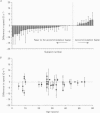Abstract
1. To study the relationship between accommodation under natural viewing conditions, age and refractive errors, we have measured time courses of accommodation in thirty-nine human subjects aged 5-49 years using a newly developed technique. The technique is based on infrared photoretinoscopy and involves fully automated on-line image processing of digitized video images of the eyes with a sampling rate of 5.3 Hz. 2. The distance between the subject and the video camera was about 1.3 m. Head movements of the subject required little restriction because the eyes were automatically tracked in the video image by the computer program. All subjects were tested under binocular viewing conditions. 3. Both refraction of the right eye and pupil diameter were measured with a precision of 0.2-0.4 dioptres (D) and 0.1 mm, respectively, and were plotted on-line. The data were subsequently automatically analysed. 4. Automated infrared photoretinoscopy proved to be very convenient and easy to handle in both children and adults. 5. The maximal speed of accommodation for a target at a distance of 5 D declined in the subjects with age (from up to 21.7 D s-1 for accommodation and 32.7 D s-1 for subsequent accommodation to a distant target ('near to far accommodation') in children down to 2-18 D s-1 in adults). There was a striking inter-individual variability in the maximum possible speed of accommodation and near to far accommodation. 6. Speed of accommodation and of near to far accommodation was correlated for each subject. However, in most of the subjects, the process of near to far accommodation was faster than accommodation (P < 0.005, if averaged over all subjects). This correlation was independent of age. 7. The accommodation-induced pupillary constriction (pupillary near response) was absent in children for a 4 D target; even at 10 D, there was no reliable pupillary response. The pupillary near response increased to about 1.6 mm D-1 of accommodation at the age of 47. Since a pupillary near response could still be elicited in presbyopic subjects unable to accommodate, the ratio of pupillary constriction per dioptre of accommodation approached infinity. 8. The magnitude of the pupillary near response was highly variable even among subjects of the same age but was typical for each subject. There was a correlation (P < 0.01) to refractive error: corrected myopes had weaker pupillary near responses than emmetropes or hyperopes.(ABSTRACT TRUNCATED AT 400 WORDS)
Full text
PDF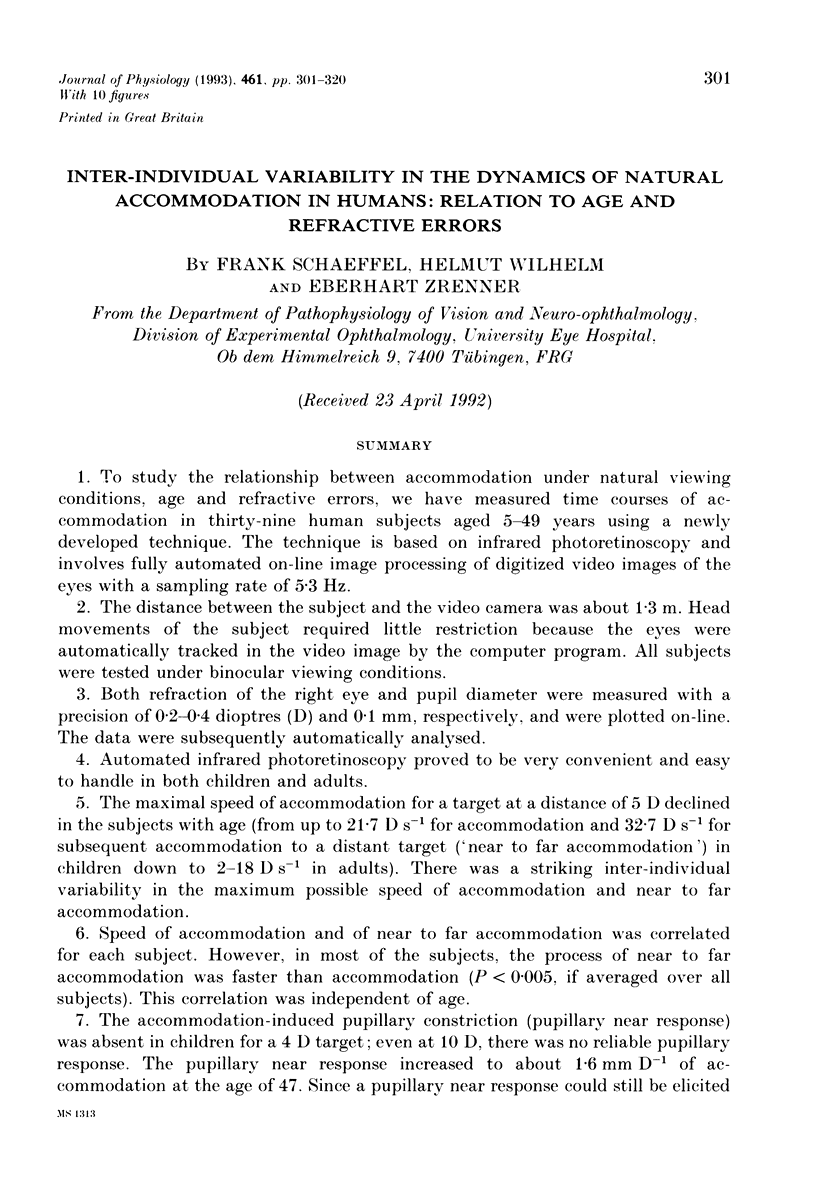

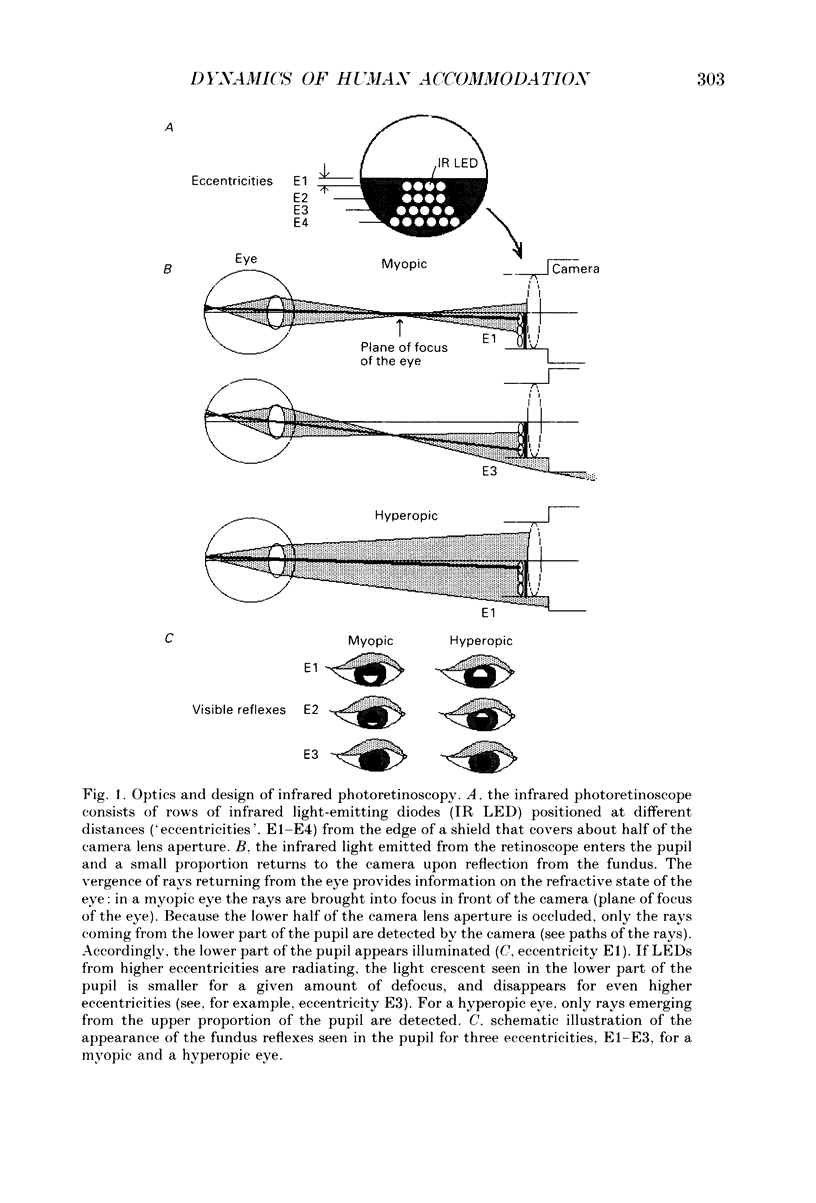
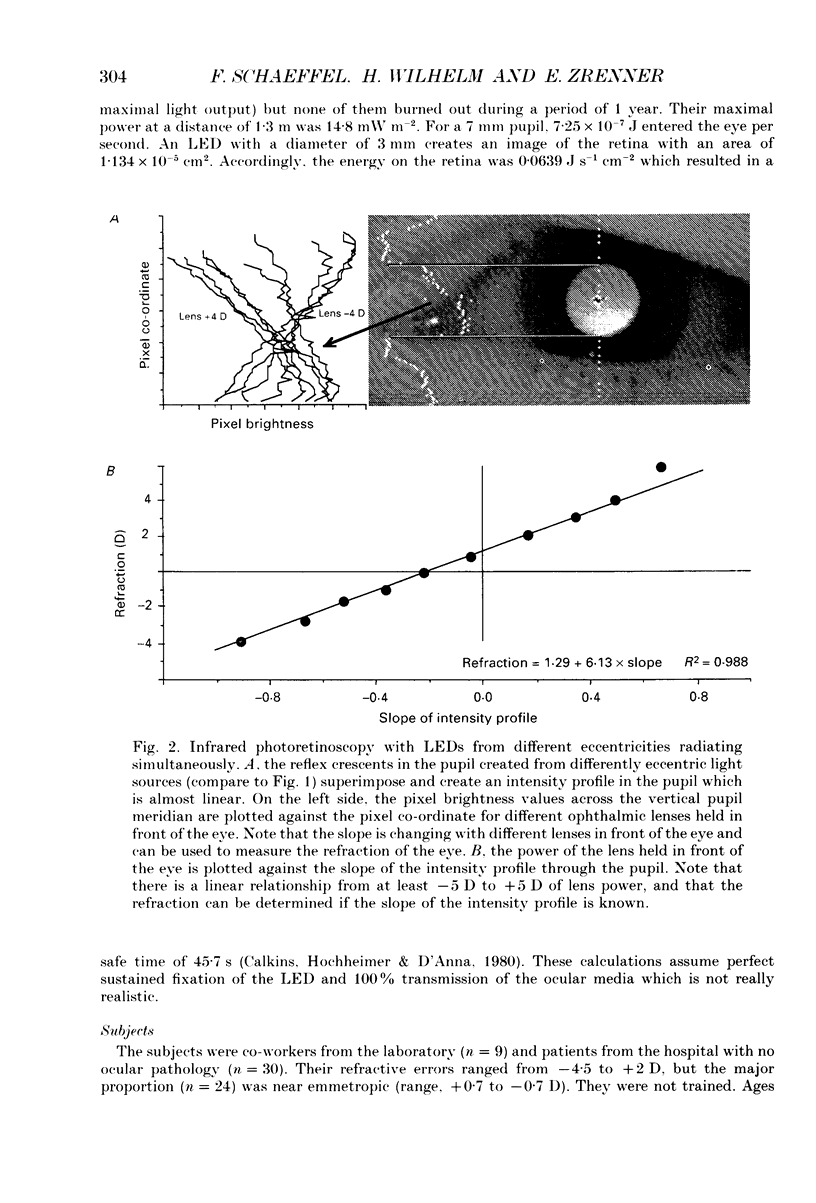
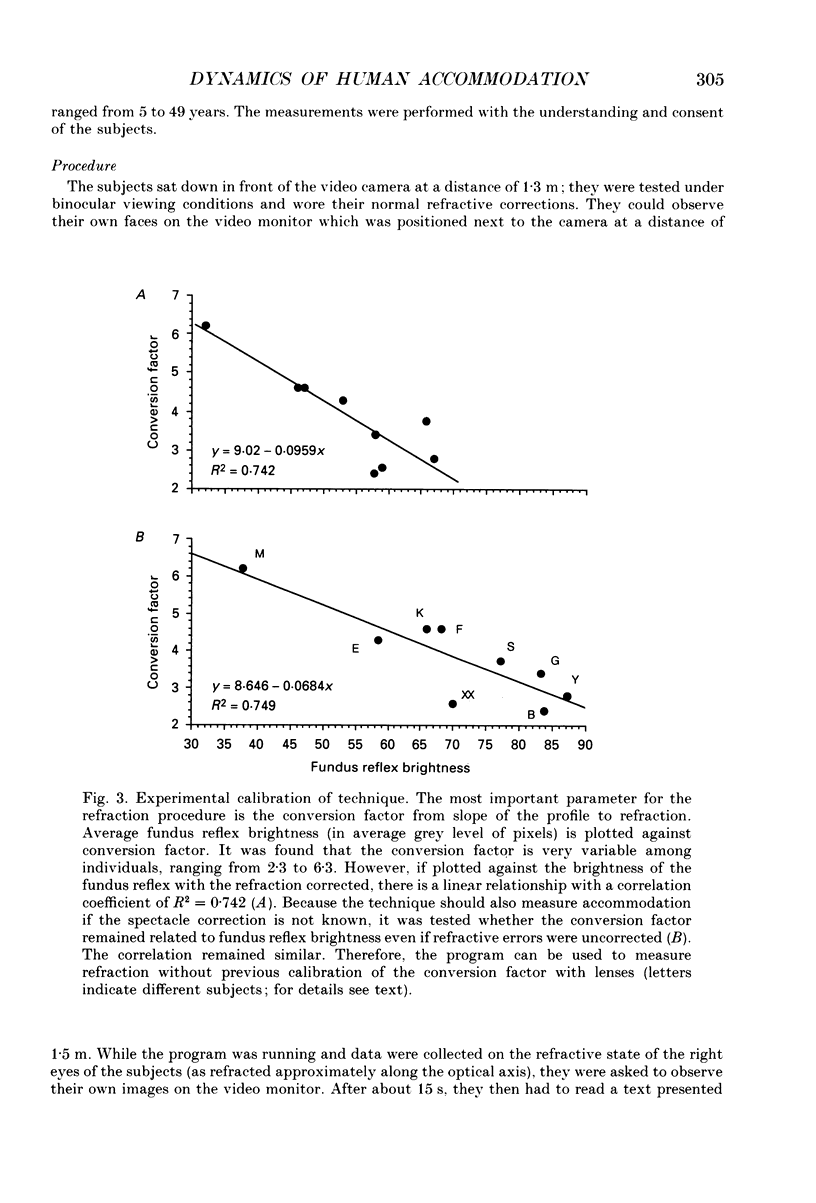
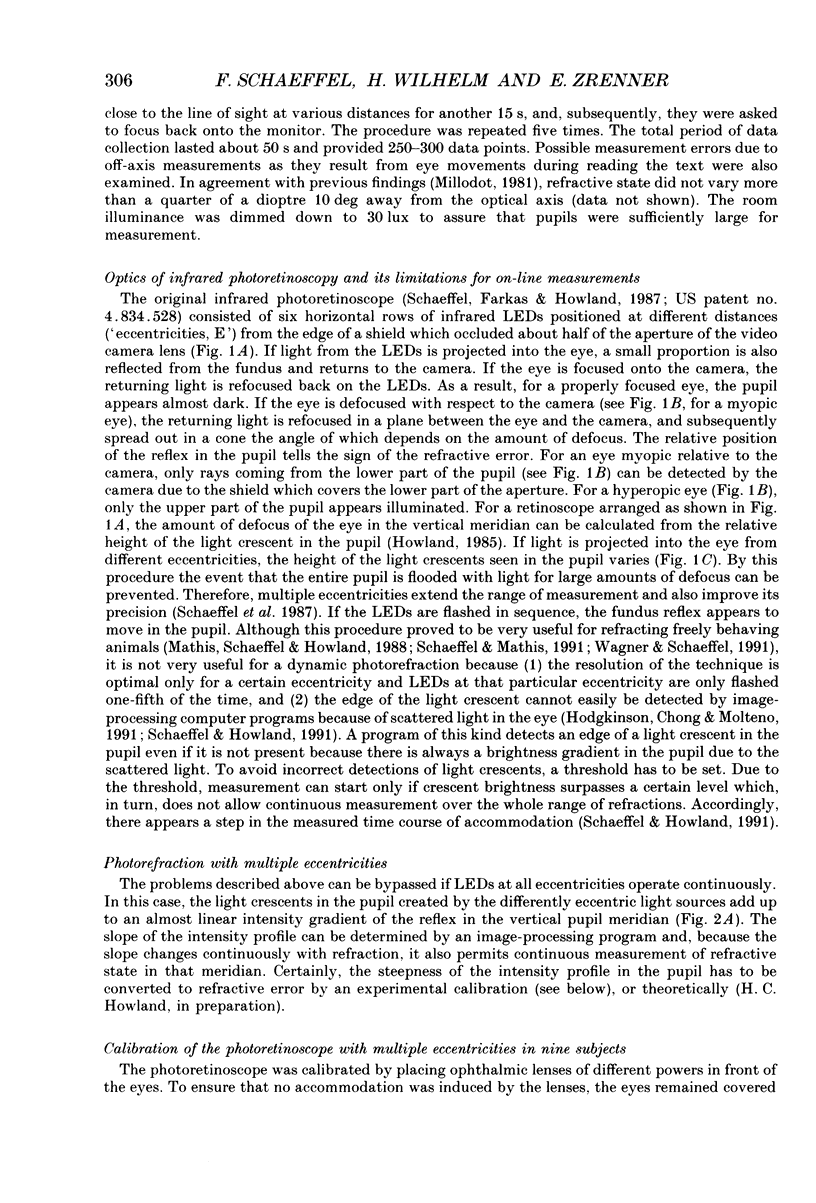
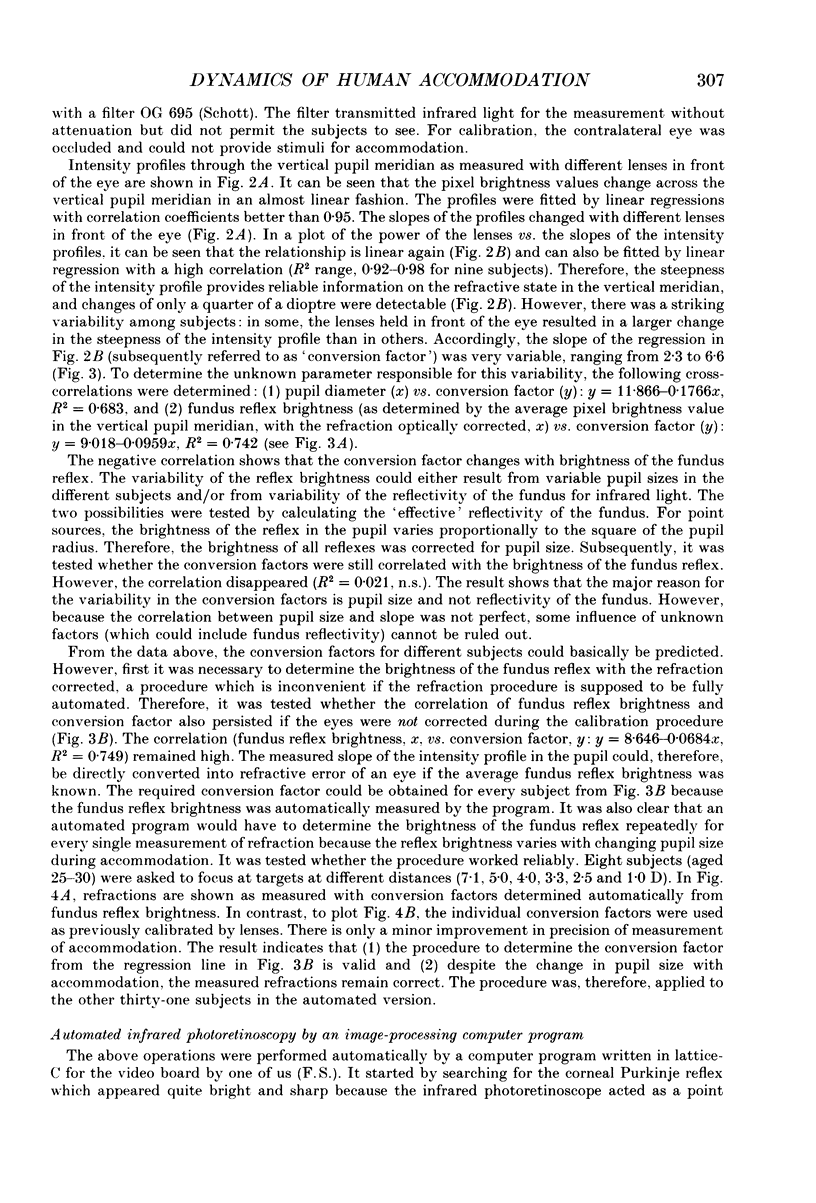
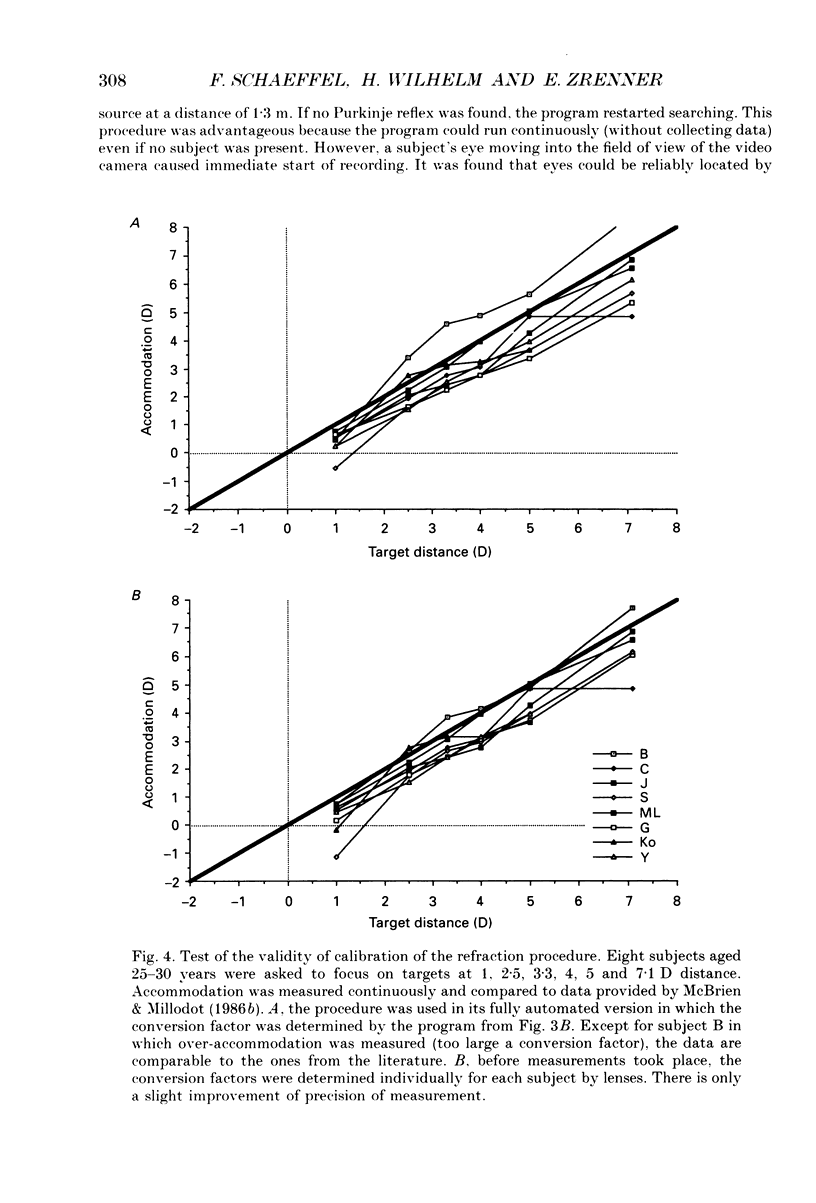
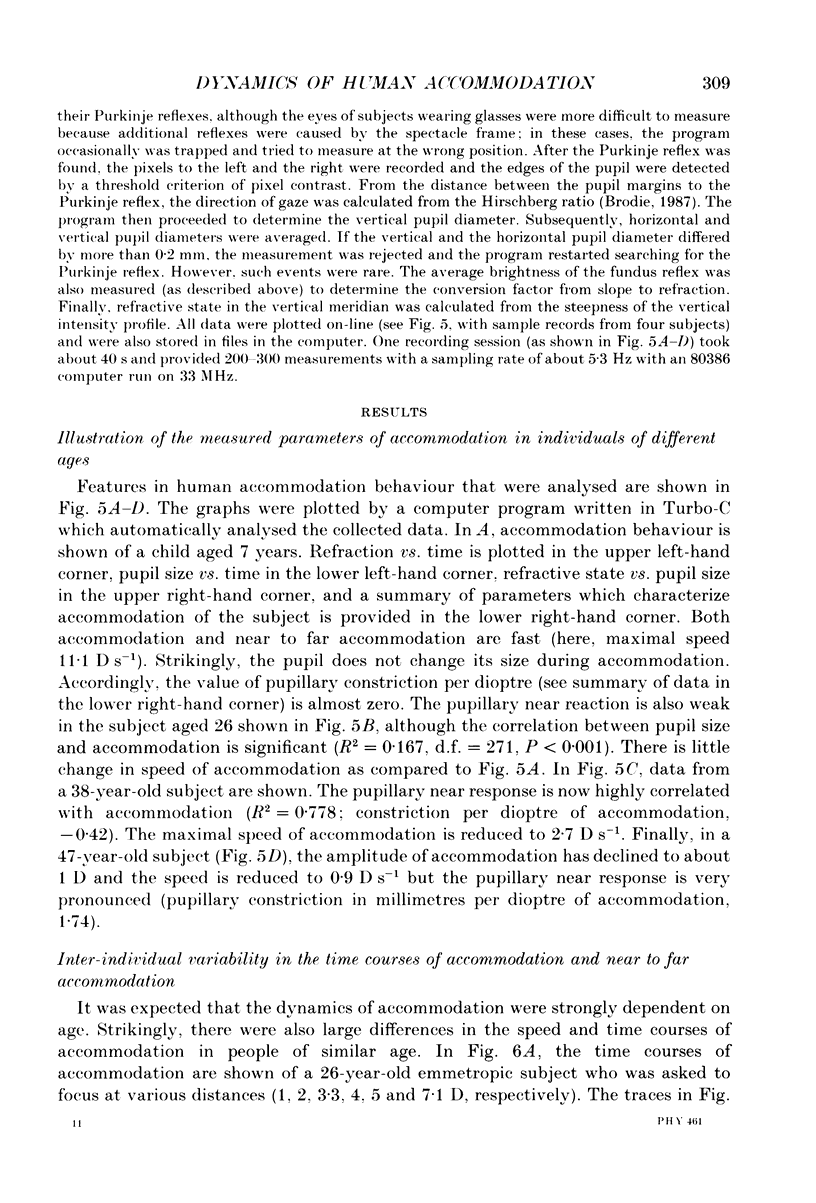



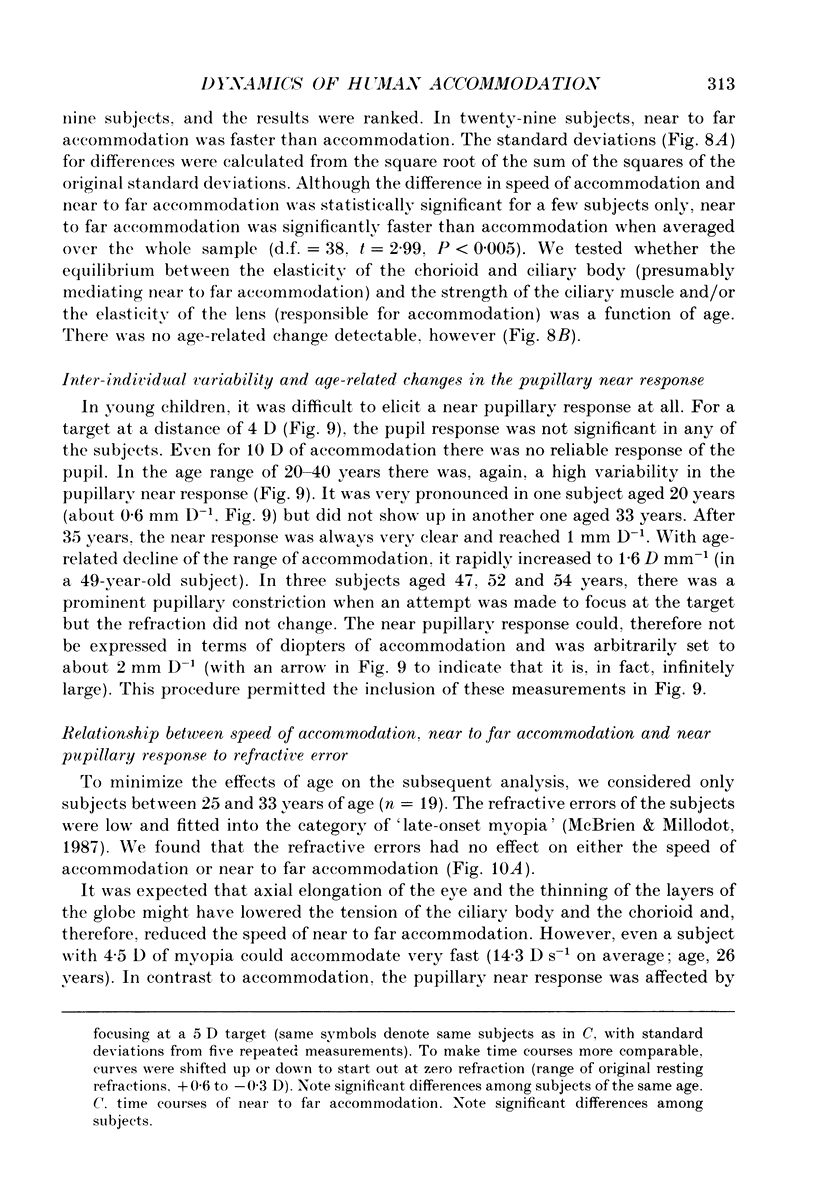
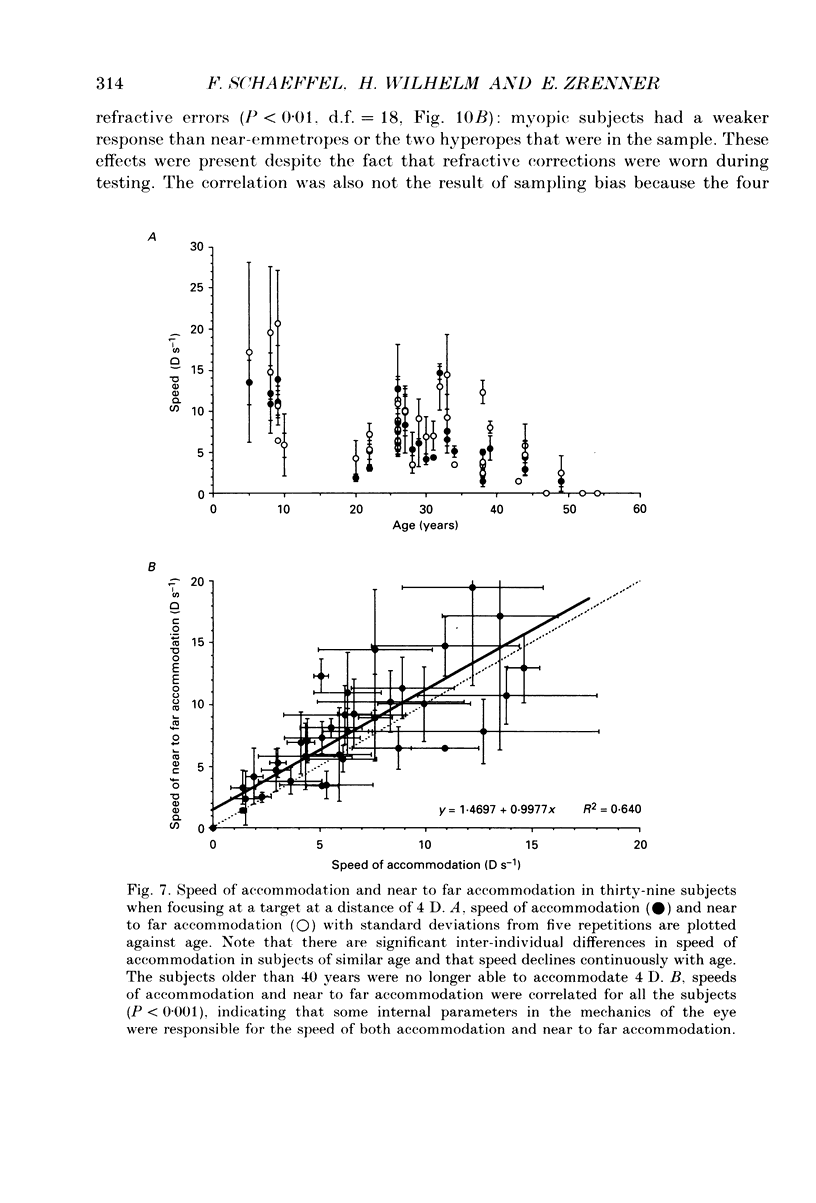
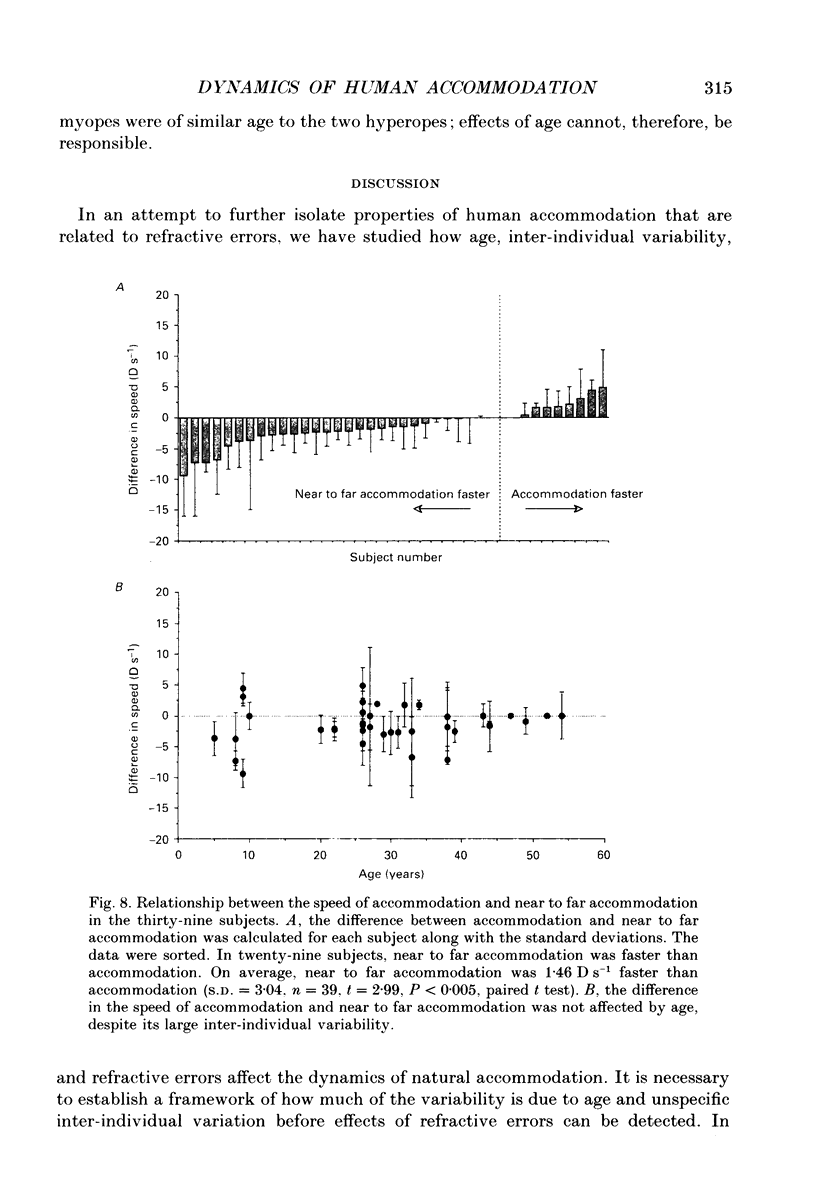
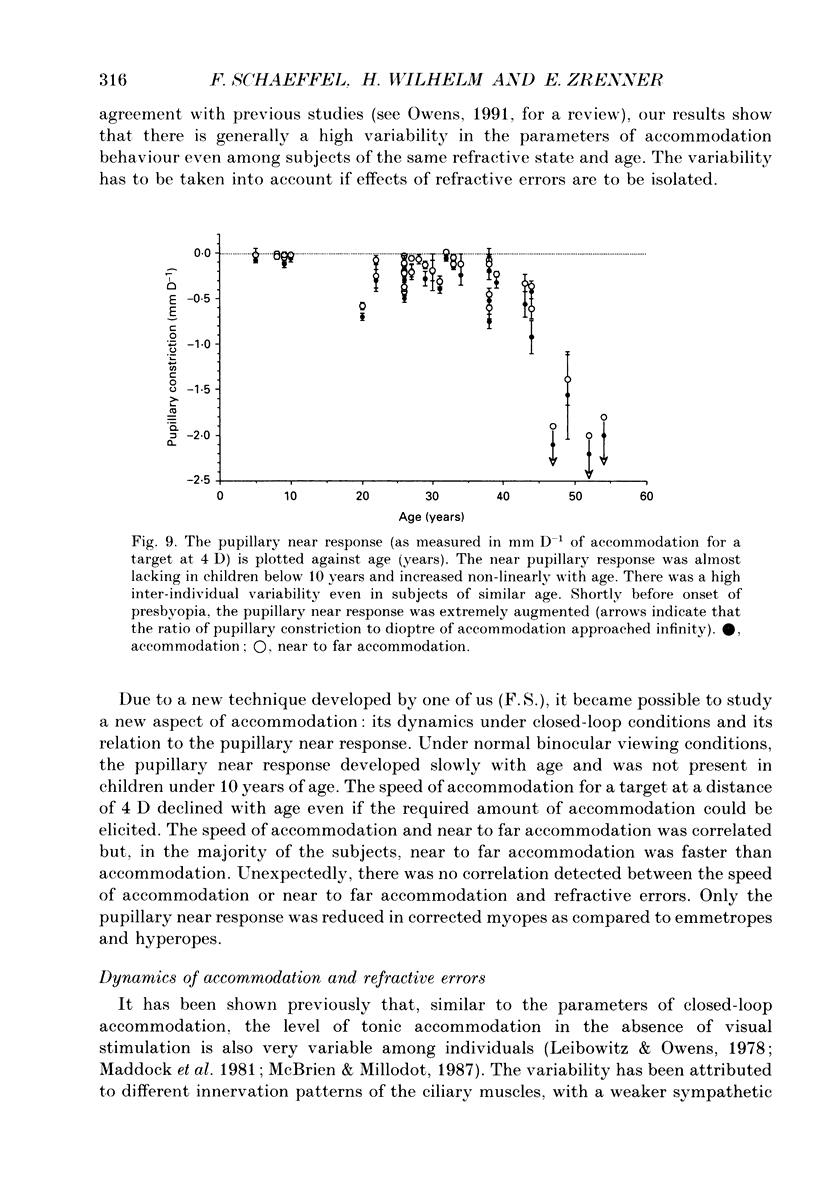
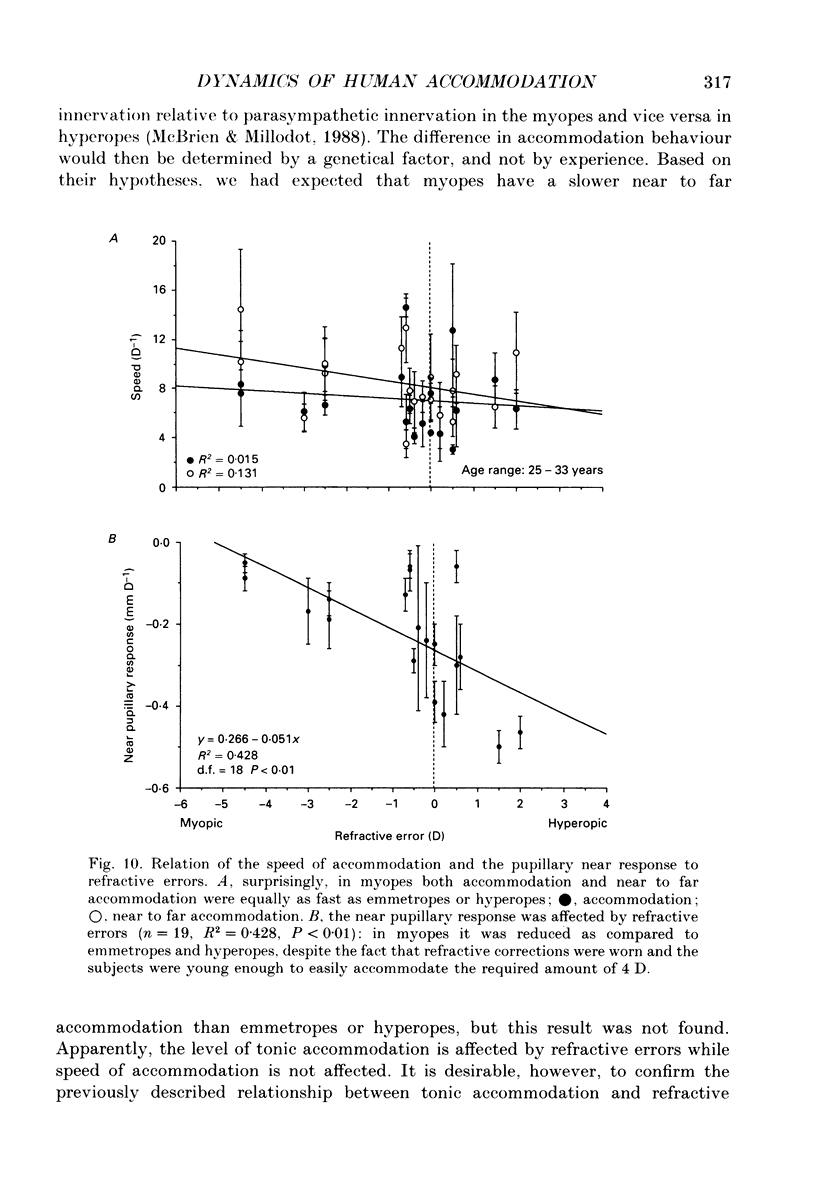
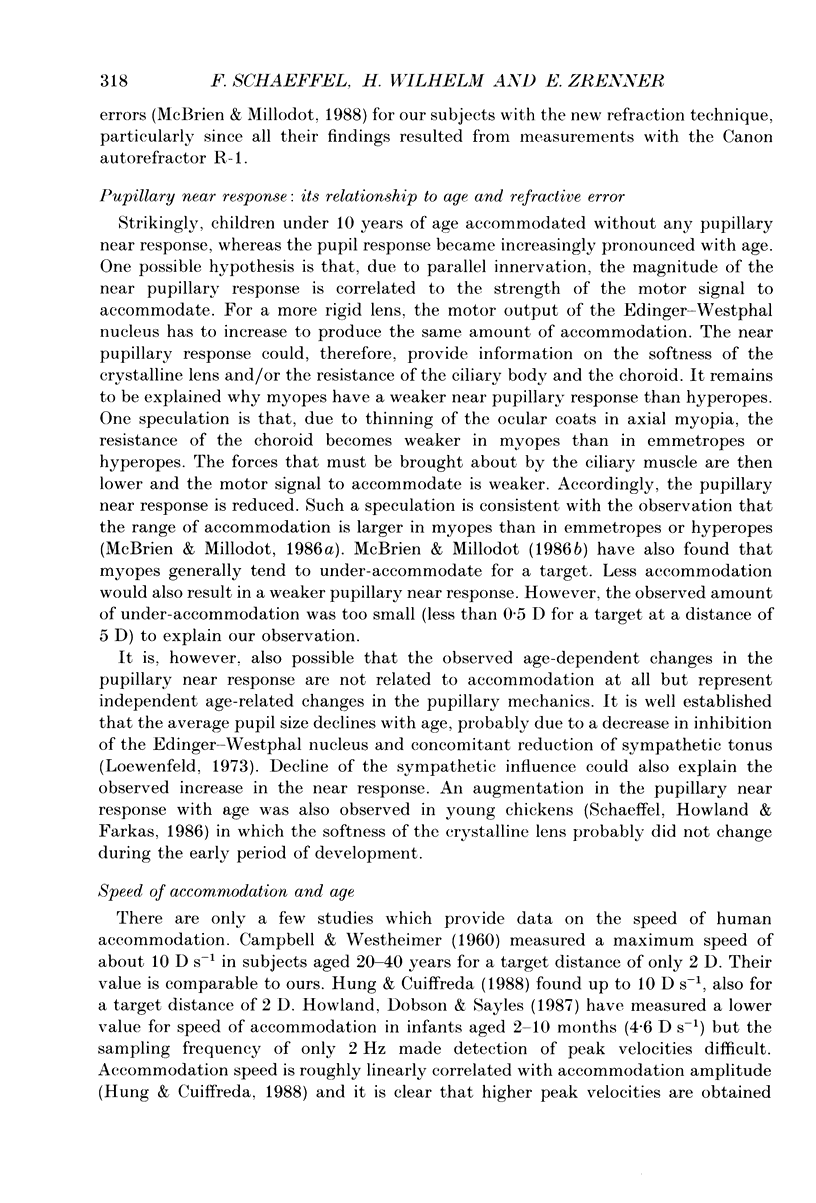
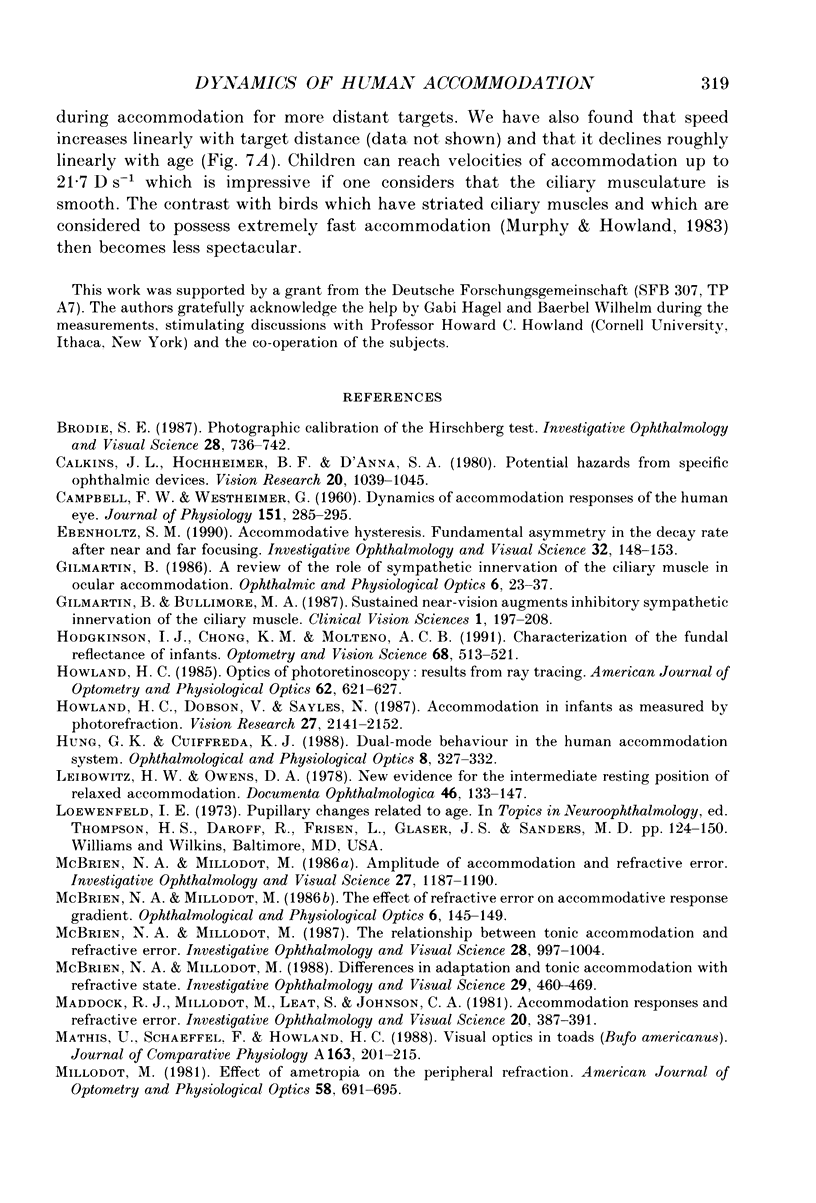
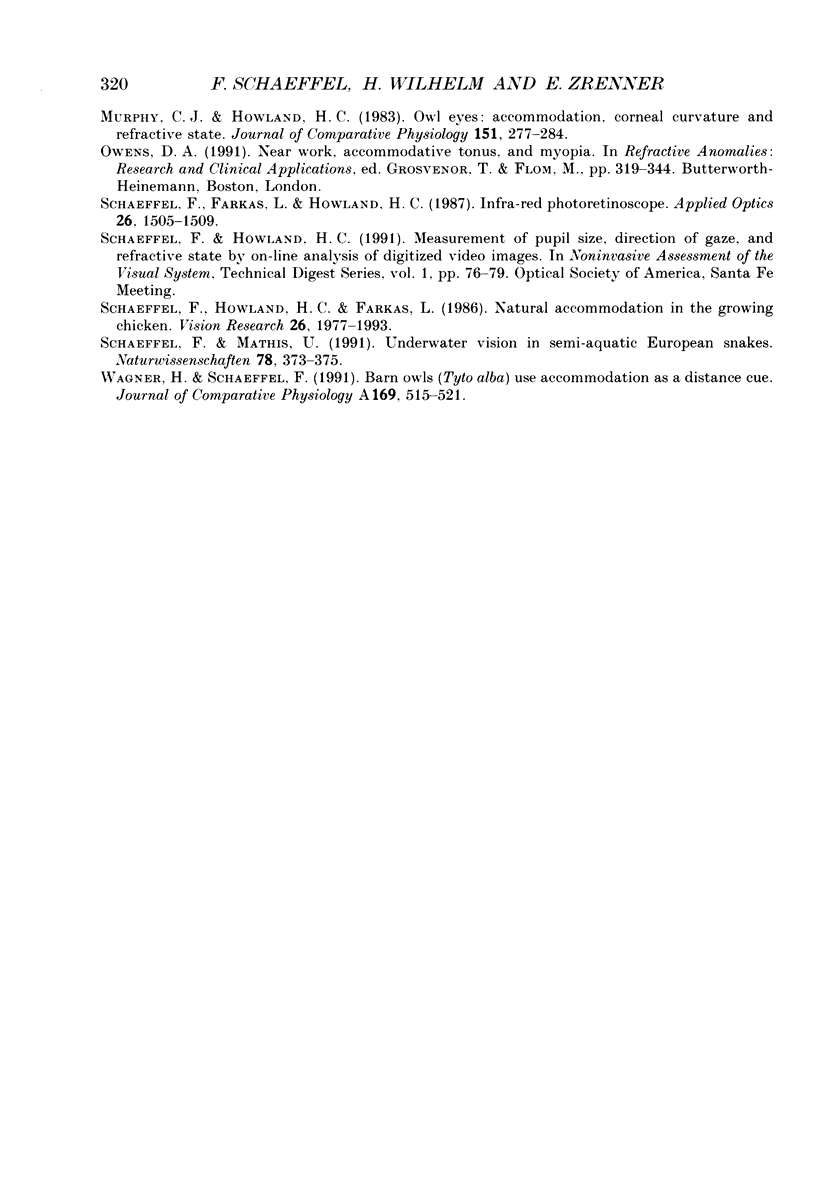
Images in this article
Selected References
These references are in PubMed. This may not be the complete list of references from this article.
- Brodie S. E. Photographic calibration of the Hirschberg test. Invest Ophthalmol Vis Sci. 1987 Apr;28(4):736–742. [PubMed] [Google Scholar]
- CAMPBELL F. W., WESTHEIMER G. Dynamics of accommodation responses of the human eye. J Physiol. 1960 May;151:285–295. doi: 10.1113/jphysiol.1960.sp006438. [DOI] [PMC free article] [PubMed] [Google Scholar]
- Calkins J. L., Hochheimer B. F., D'Anna S. A. Potential hazards from specific ophthalmic devices. Vision Res. 1980;20(12):1039–1053. doi: 10.1016/0042-6989(80)90042-5. [DOI] [PubMed] [Google Scholar]
- Ebenholtz S. M. Accommodative hysteresis. Fundamental asymmetry in decay rate after near and far focusing. Invest Ophthalmol Vis Sci. 1991 Jan;32(1):148–153. [PubMed] [Google Scholar]
- Gilmartin B. A review of the role of sympathetic innervation of the ciliary muscle in ocular accommodation. Ophthalmic Physiol Opt. 1986;6(1):23–37. [PubMed] [Google Scholar]
- Hodgkinson I. J., Chong K. M., Molteno A. C. Characterization of the fundal reflectance of infants. Optom Vis Sci. 1991 Jul;68(7):513–521. doi: 10.1097/00006324-199107000-00002. [DOI] [PubMed] [Google Scholar]
- Howland H. C., Dobson V., Sayles N. Accommodation in infants as measured by photorefraction. Vision Res. 1987;27(12):2141–2152. doi: 10.1016/0042-6989(87)90128-3. [DOI] [PubMed] [Google Scholar]
- Howland H. C. Optics of photoretinoscopy: results from ray tracing. Am J Optom Physiol Opt. 1985 Sep;62(9):621–625. [PubMed] [Google Scholar]
- Hung G. K., Ciuffreda K. J. Dual-mode behaviour in the human accommodation system. Ophthalmic Physiol Opt. 1988;8(3):327–332. [PubMed] [Google Scholar]
- Leibowitz H. W., Owens D. A. New evidence for the intermediate position of relaxed accommodation. Doc Ophthalmol. 1978 Oct 16;46(1):133–147. doi: 10.1007/BF00174103. [DOI] [PubMed] [Google Scholar]
- Maddock R. J., Millodot M., Leat S., Johnson C. A. Accommodation responses and refractive error. Invest Ophthalmol Vis Sci. 1981 Mar;20(3):387–391. [PubMed] [Google Scholar]
- Mathis U., Schaeffel F., Howland H. C. Visual optics in toads (Bufo americanus). J Comp Physiol A. 1988 Jun;163(2):201–213. doi: 10.1007/BF00612429. [DOI] [PubMed] [Google Scholar]
- McBrien N. A., Millodot M. Amplitude of accommodation and refractive error. Invest Ophthalmol Vis Sci. 1986 Jul;27(7):1187–1190. [PubMed] [Google Scholar]
- McBrien N. A., Millodot M. Differences in adaptation of tonic accommodation with refractive state. Invest Ophthalmol Vis Sci. 1988 Mar;29(3):460–469. [PubMed] [Google Scholar]
- McBrien N. A., Millodot M. The effect of refractive error on the accommodative response gradient. Ophthalmic Physiol Opt. 1986;6(2):145–149. [PubMed] [Google Scholar]
- McBrien N. A., Millodot M. The relationship between tonic accommodation and refractive error. Invest Ophthalmol Vis Sci. 1987 Jun;28(6):997–1004. [PubMed] [Google Scholar]
- Millodot M. Effect of ametropia on peripheral refraction. Am J Optom Physiol Opt. 1981 Sep;58(9):691–695. doi: 10.1097/00006324-198109000-00001. [DOI] [PubMed] [Google Scholar]
- Schaeffel F., Howland H. C., Farkas L. Natural accommodation in the growing chicken. Vision Res. 1986;26(12):1977–1993. doi: 10.1016/0042-6989(86)90123-9. [DOI] [PubMed] [Google Scholar]




